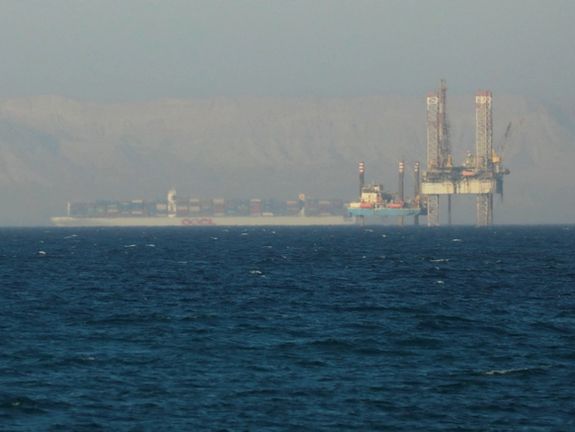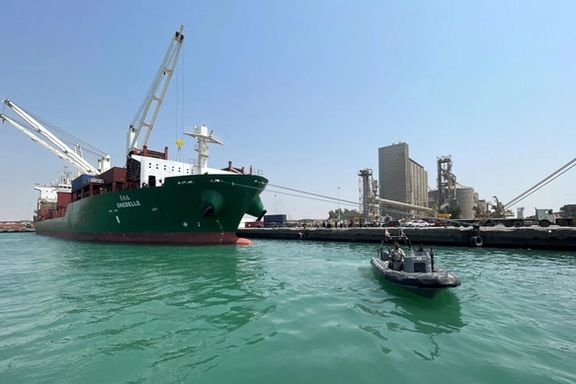Why Iran’s Houthis Are Keeping Oil Out Of Red Sea Blockade

While Iran’s Yemeni proxy, the Houthis, attack commercial shipping in the Red Sea, disrupting free flow of goods, oil has so far remained mysteriously immune.

While Iran’s Yemeni proxy, the Houthis, attack commercial shipping in the Red Sea, disrupting free flow of goods, oil has so far remained mysteriously immune.
In its threat to the key shipping corridor, which the Houthis say is to block vessels to Israel in support of Hamas amid the Gaza war, so far, oil has been untouched, Reuters reported on Tuesday.
It is plausible, albeit unsupported thus far, that Iran, concerned about the freedom of its own oil shipments toward China, has taken measures to ensure that tankers remain unharmed in the Red Sea, responsible for 12 percent of the world's oil shipments, including those from Saudi Arabia.
Even in Tehran, Iran’s leaders know how ‘sacred’ oil is and to push the world’s leaders into conflict over its shipment, may be a step too far amid an escalating proxy war.
December’s oil and fuel tanker traffic in the Red Sea was stable, even though many container ships have rerouted due to Houthi attacks, according to Reuters data.
But it seems Iran may be capitalizing on the newfound instability. Last week, reports claimed China’s oil trade with Iran has stalled as Tehran withholds shipments and demands higher prices from its top client, tightening cheap supply for the world's biggest crude importer.

The cutback in Iranian oil, which makes up 10% of China's crude imports and hit a record in October, could support global prices and squeeze profits at Chinese refiners.
Independent refineries favor Iranian oil as it’s cheap, and high quality. Iranian Light, the main export grade, trades at a discount of about $13 a barrel.
However, the Houthis’ blockade has driven up shipping costs and insurance premiums, which will have global ramifications, and led to a US-led coalition of more than 20 nations, which are ready to take military action if attacks on global shipping continue.
Some oil companies like BP and Equinor have diverted cargoes to a longer route around Africa but oil continues to flow. "We haven't really seen the interruption to tanker traffic that everyone was expecting," Michelle Wiese Bockmann, a shipping analyst at Lloyd's List, told Reuters.
A daily average of 76 tankers carrying oil and fuel were in the south Red Sea and Gulf of Aden in December, the area close to Yemen that has seen attacks. That was only two fewer than November's average and just three below the average for the first 11 months of 2023, according to data from ship tracking service MariTrace.

Rival tracking service Kpler tracked 236 ships on average daily across all of Red Sea and Gulf of Aden in December, slightly above the 230 daily average in November. The additional cost of sailing around the Cape of Good Hope off Africa rather than via the Red Sea would make voyages to deliver oil less profitable.
According to data from ship analytics firm Marhelm, it costs as much as $85,000 a day to ship oil on Suezmax tankers, which can carry as much as one million barrels. Aframax vessels, which can move 750,000 barrels, cost $75,000 a day.
In a rare attack on oil, last month saw a missile fired by Yemen’s Houthi rebels hit a Norwegian-flagged tanker in the Red Sea off the coast of Yemen near a key maritime choke point.
The assault on the oil and chemical tanker Strinda in the Bab el-Mandeb Strait, was a rare example of oil bearing the brunt of a war which is being waged by Iran’s proxies surrounding Israel’s borders and beyond since October 7’s invasion of Israel by Hamas, killing over 1,200 mostly civilians and taking over 240 hostage.
Consequently, tanker traffic in the south Red Sea region briefly dipped between December 18 and December 22 when the Houthis intensified attacks on vessels, averaging 66 tankers, but movements resumed after, according to MariTrace.
Container ship traffic in the area has fallen more sharply, down 28% in December from November, according to MariTrace. According to LSEG data, several oil majors, refiners and trading houses have continued to use the Red Sea route, perhaps aware of the importance of oil even to the grand puppet master of the Middle East’s proxies.
“Shippers and their customers really want to avoid a schedule disruption. So they are still taking the risk," said Calvin Froedge, founder of Marhelm, speaking to Reuters. He noted that many oil tankers transiting the Red Sea were carrying Russian crude to India, which the Houthis have no interest in attacking.
Other tankers, chartered by trading house Gunvor's unit Clearlake, Indian refiner Bharat Petroleum and Saudi Arabia's Aramco Trading Company, have all navigated the route in recent weeks. Iran’s ally Russia, whose oil supply remains key amidst its own sanctions, also remains India’s largest supplier, and the complexities of disrupting an already fragile relationship does not bode well for Tehran.
Since the second half of December, at least 32 tankers have diverted or transited via the Cape of Good Hope, instead of using the Suez Canal, according to ship tracking service Vortexa.
The tankers that are diverting are mostly those chartered by companies who announced a pause on Red Sea movement, or those operated by US and Israel-linked entities.
For now, Tehran seems to be playing a smart diplomatic game, but how things turn in coming weeks is anyone’s guess as the Houthis continue to recruit tens of thousands of militants in its war on Israel.